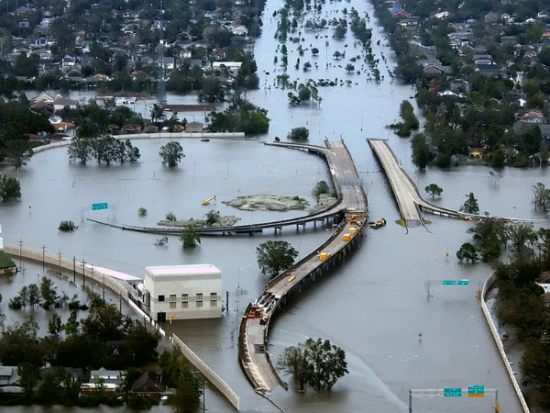Remembering Hurricane Katrina
It’s sixteen years later, but the date August 29, 2005, has not been forgotten. It was when Hurricane Katrina struck the southeastern US. On that date, the community of New Orleans was forever changed.
The city, hospitals, and people were devastatingly affected. Looking back, this week marks that day when Hurricane Katrina hit the Louisiana coast. It was a frightening Category 3 storm that left About 80 percent of New Orleans submerged. In all of US history, this was the costliest natural disaster.
There was a call for emergency evacuation after the levees broke and water rushed in. After sixteen years, the agony of the families of 1800 people who died still lingers. The heroism of those who never thought twice to help in evacuation efforts was still remembered.
The Initial Storm

Photo Credit: Wikipedia
The storm was first monitored on August 23, 2005, as a tropical cyclone in the Bahamas. After two days, the tropical storm gathered strength, and the weather system detected Hurricane Katrina’s designation.
The tropical depression was on land for less than eight hours. It made landfall between Fort Lauderdale and Miami, Florida. It strengthens when it passes the warm waters of the Gulf of Mexico.
Katrina intensified and was declared at category 3 on August 28. The next afternoon, Katrina became one of the strongest Atlantic storms on record. The wind speeds over 170 miles per hour. On August 29, the storm made landfall in a category four hurricane in Louisiana.
A storm surge occurred more than 26 feet high, slamming the coastal areas of the Gulfport and the Mississippi rivers. Homes and resorts along the beachfront are destroyed. While New Orleans missed the direct hit of strong winds, the levee system broke due to the 10 inches of rain and Katrina’s storm surge. The sea level increased.
It’s Sunday evening when Katrina made landfall across Southeastern Louisiana. Come Wednesday, and the city was left in destruction. The children’s hospital had no water at that time. Hospital CEO Steve Worley declared a hospital evacuation making the whole community heroes as they all struggled to help save the hospital patients.
Related Articles
The Aftermath
#OnThisDay in 2005, Hurricane Katrina formed, later killed 1,833 and caused over $125B in damage pic.twitter.com/43OZCTM9vW
— Complete EM (@CompleteEM1) August 23, 2021
Even New Orleans Mayor Ray Nagin announced a mandatory evacuation of the whole city. It was estimated that 1.2 million residents had already left before the storm came. But there are still tens of thousands who couldn’t and didn’t leave. They stayed at home, and others sought shelter at the New Orleans Convention Center and Louisiana Superdome.
The first batch of evacuees arrived at the Red Cross shelter on August 31. Still, thousands chose to remain in the city. On September 1, about 30,000 people were sheltered under the damaged roof of the Superdome.
There were shortages of food and clean water. This brought another issue of a public health emergency.
On September 2, the military arrived in the city, and the National Guard troops took over to distribute food and water. Evacuation continued, and the levees were rebuilt. Dozens of countries send over help with food, supplies, and funds.
The city of New Orleans’ population was down to 29 percent. Katrina caused an estimated 4160 billion in damage.

